One family that has certainly impacted the business vitality in Dry Fork and its vicinity is the family of Tarpley White Jones (1852-1907). He was the youngest of five born to a shoe maker named James Jones (~1810-1885). Tarpley’s uncle John W. Jones (~1818-1874) was also a shoe maker who lived close by. In fact, Chatham Judge Langhorne Jones Sr. (1902-1988) was a descendant of John’s branch. It is likely that Tarpley’s name comes from a prominent local resident, Col. Tarpley White (1816-1882), who also served as Circuit Clerk of Pittsylvania County between 1858 and 1864.
Five children of James Jones (~1810-1885) and Mary Harrison (1814-1876) are as follows:
- John B. Jones (1837~1905)
- William A. Jones (1845-1865)
- Filmore A. Jones (~1849~1885)
- Celestia Ann Jones (1850~1920)
- Tarpley White Jones, Sr. (1852-1907)
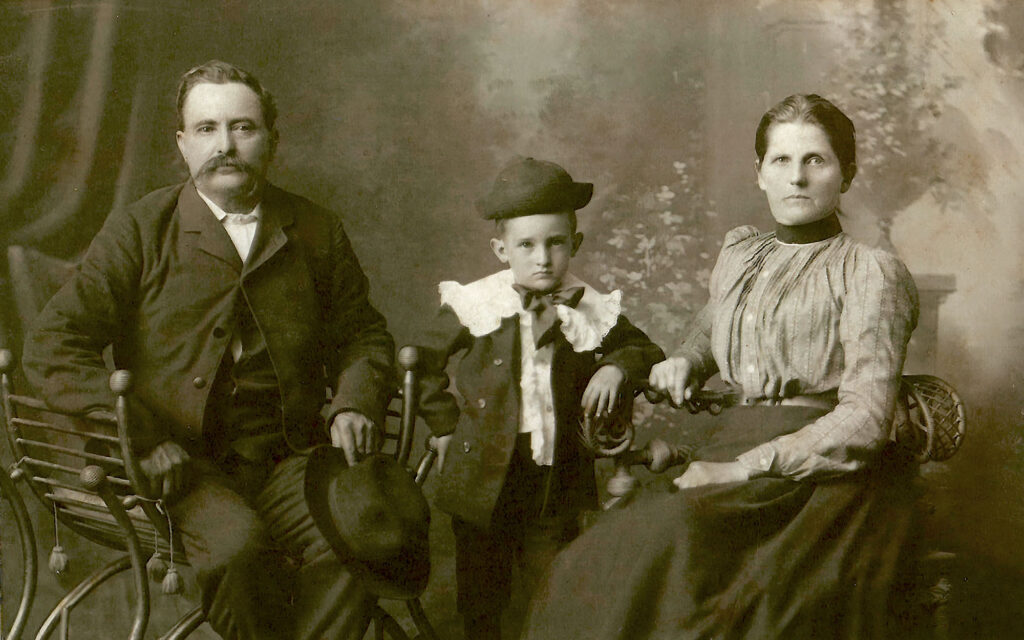
Tarpley W. Jones Sr., wife Susan Mitchell Jones, & son Tarpley Jr. circa 1902
In the 1860 census, Pittsylvania County was split into the Northern and Southern districts, of which Tarpley’s family lived in the Northern district at that time. The Dry Fork vicinity they later moved to was within the Southern District. After the Civil War, the Jones family became intertwined with the family of Henry Coleman Mitchell Sr. (1805-1888) and wife Jane Giles (1811-1887) of the Dry Fork vicinity. First, Tarpley’s brother Filmore married Lucy Mitchell in October 1866. Two months later, Tarpley’s sister Celestia married Henry C. Mitchell Jr., who had survived his service in the 38th VA Infantry, CSA several years prior. So, in 1869, Tarpley took Susan Mitchell as his wife and moved onto the property of her father, Henry Sr. From these three marriages, an abundance of descendants survive today and hold strong ties to the Dry Fork community’s history.
Tarpley is considered the patriarch of the Jones whiskey distillers in Dry Fork. He and his wife brought thirteen Jones children into the world, a handful of which became prominent businessmen in the area. At some point, Tarpley learned how to distill whiskey, which became synonymous with Dry Fork and about as important as growing tobacco. In a report of licensed distillery operations in 1894, “T. W. Jones” was listed among those producers in the county. He is stated to have produced about 170 gallons of whiskey that year. No doubt his sons apprenticed under their father throughout this decade. The 1900 Census lists a boarder in the household who was working as a distiller, while Tarpley’s occupation is listed as farmer. He was a thirty-five year old man named James C. Barker.
Thirteen children of Tarpley & Susan Jones are as follows:
- Sidney William Jones (1871-1940)
- Elizabeth Ellen “Bettie” Jones (1873-1952)
- Berta Bell Jones (1875-1961)
- James Henry “Jim” Jones (1876-1929)
- Flora Jane Jones (1879-1926)
- Major Jesse Jones (1881-1956)
- Edward “Ed” Jones (1883-1965)
- Beverly White Jones (1885-1944)
- Hugh Tarpley Jones (1887-1911)
- Madie Sue Jones (1890-1942)
- Augusta “Gustie” Jones (1892-1934)
- Eva Jones (1894-1988)
- Tarpley White Jones, Jr. (1897-1947)
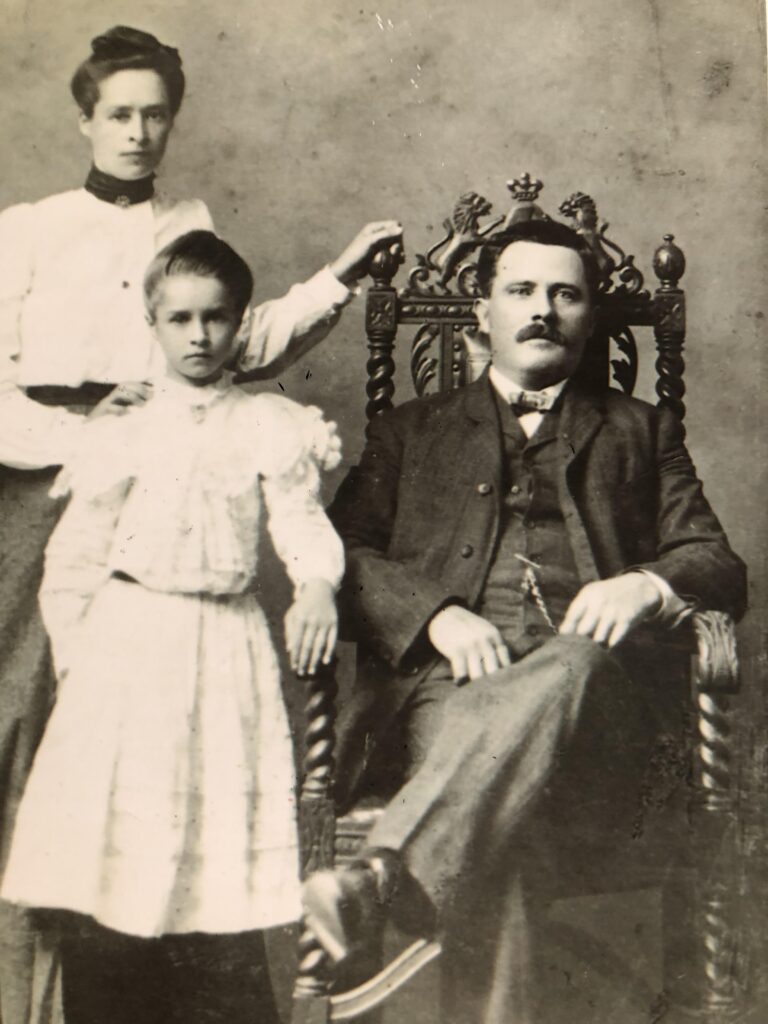
Sid Jones, wife Emily, and daughter Bessie circa 1903.
Photo courtesy of Julia Gatewood, a descendant
Tarpley’s oldest son, Sidney William “Sid” Jones (1871-1940), obtained his own license to distill whiskey between 1903 and 1904 with J. Hutch Pigg. He later began operating a grain distillery at the old Dry Fork Distilling Company in 1909. Sid was married to Emily Virginia Hardy (1874-1909) from the Hardy family of Dry Fork. She was also a descendant of tavern keeper Stephen Yates. At the age of 35, Emily was consumed by an illness and passed. Several years later Sid remarried to Ida Bell Grant (1890-1937) from the Grant family of Dry Fork. She was also a descendant of “Owen of All” Adkins. Her brother, John T. Grant was my great-great grandfather. Together, Sid and Ida had four more children.
Tarpley’s daughter Elizabeth Ellen “Bettie” Jones (1873-1952) was married to Charles Henry “Charlie” Price (1859-1930) from the Price family of Dry Fork. Together they raised ten children on their farm. Around 1910, they donated some land for the community to build a church.. Brothers Oscar Reynolds Stowe & William Thomas Stowe hosted brush arbors, which grew into an organized group with nine charter members in 1915. Here a small frame building, about 30 ft by 45 ft, was constructed in 1916 with help from Bettie’s brother Mr. Ed Jones. It was the first structure to the present Emmanuel Pentecostal Holiness Church of Dry Fork, which was replaced in 1950 with impressive brick architecture that features crenulated towers like a castle.

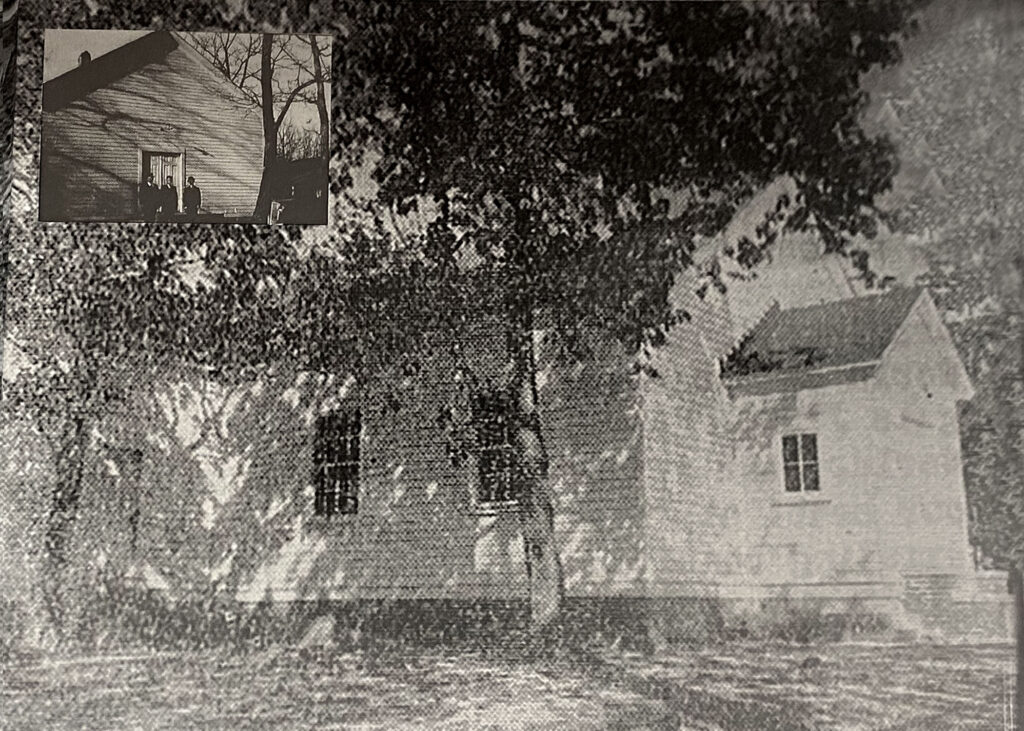
original building plus enlargements added around 1940.
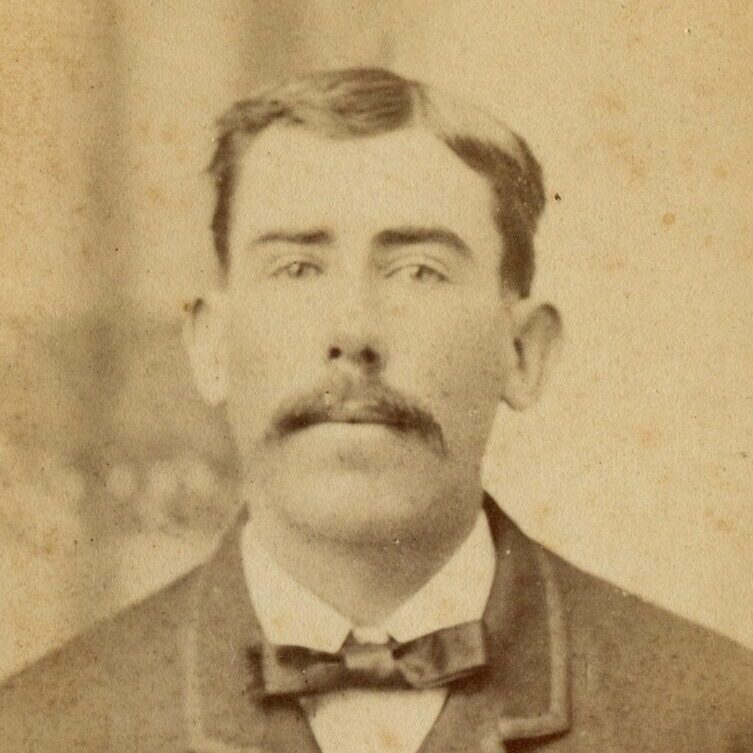
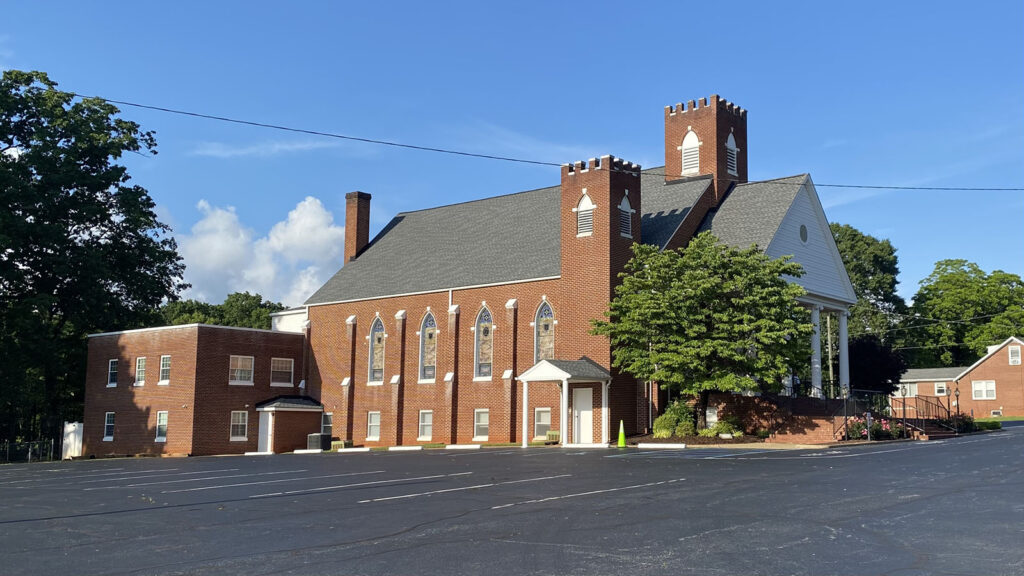
Tarpley’s daughter Berta Bell Jones (1875-1961) was married to Robert Coleman Elliott (1861-1946) from the Elliott family of Dry Fork. Together they raised eight daughters and six boys. Their daughter Mae Elliott (1900-1990) married Harry Clay Jones (1894-1982) from an unrelated Jones family of Dry Fork. He was a son of Ellis Hannibal Jones (1849-1940).
Tarpley’s son James Henry “Jim” Jones (1876-1929) was married to Annie Kate Stowe (1883-1944) from the Stowe family of Dry Fork. Together they had eight children. In 1908, Jim began operating the old Pigg’s Mill and grain distillery to create about thirty bushels of mash per day. He updated the grist mill to a roller mill and replaced much of the weatherboarding. He also operated “J. H. Jones Grocery Company” in a store across from Hopewell United Methodist Church. Their oldest son, Irvin Thomas Jones (1900-1948) continued to operate the Jones Roller Mill after his father’s death in 1929. This is confirmed in the 1930 census with Irvin’s occupation listed as miller. Jim’s daughter Ethel Jones (1913-1981) married Roy Irvin Jones (1908-1975), from the other Jones family of Dry Fork. He was a son of Dry Fork postmaster/barber Charlie Hannibal Jones (1881-1974), brother to Harry Clay Jones (mentioned previously).
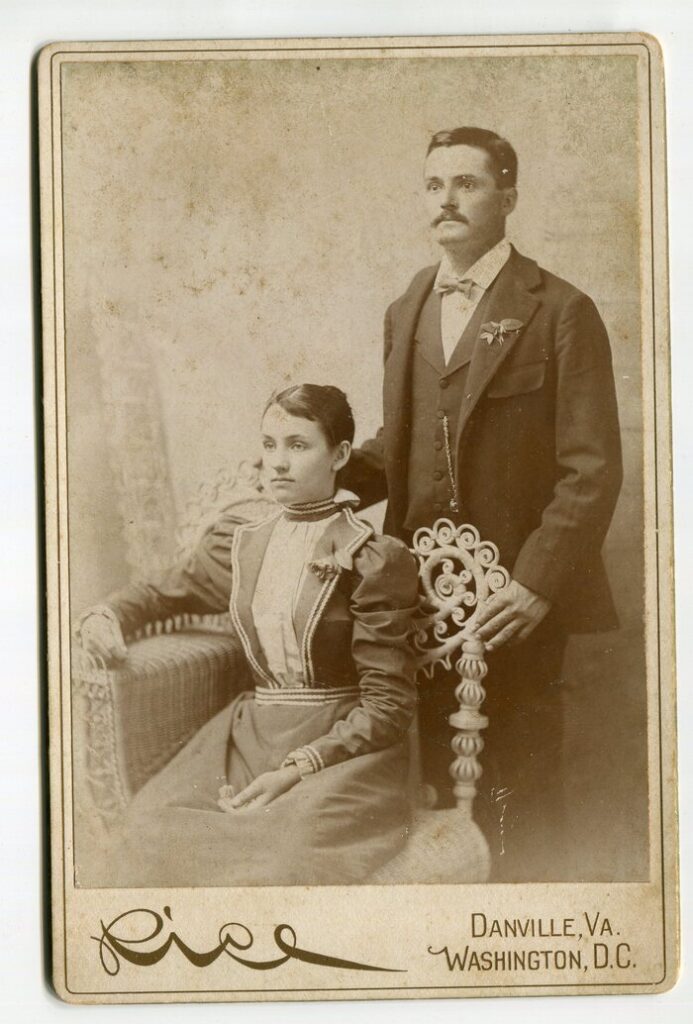
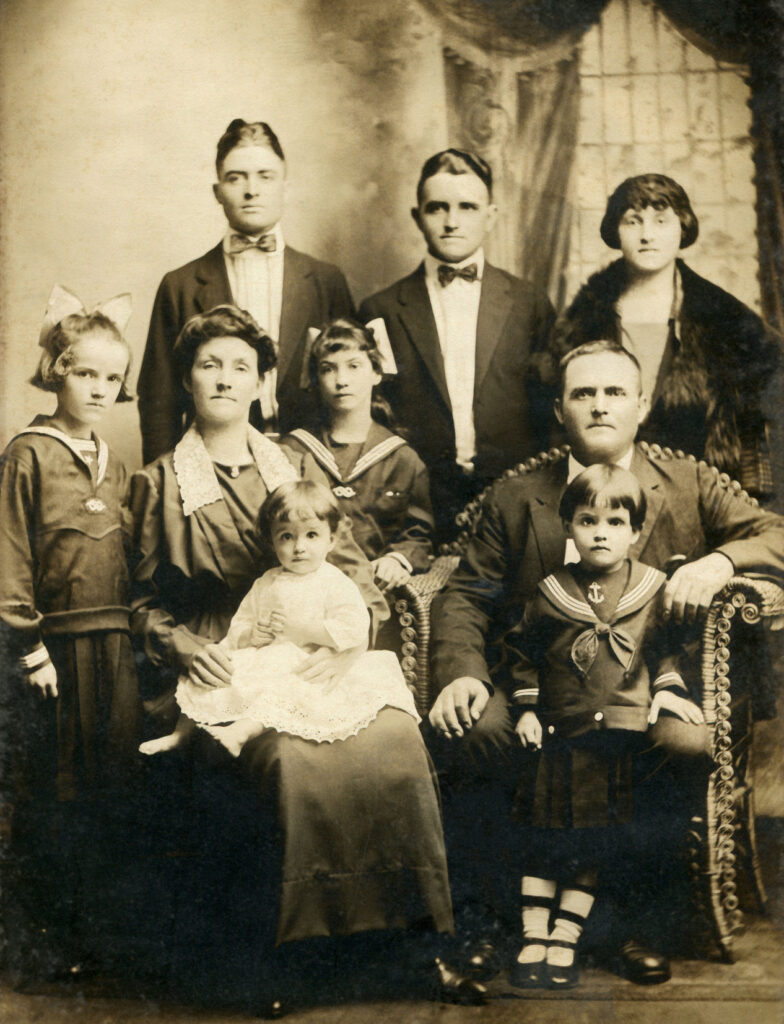
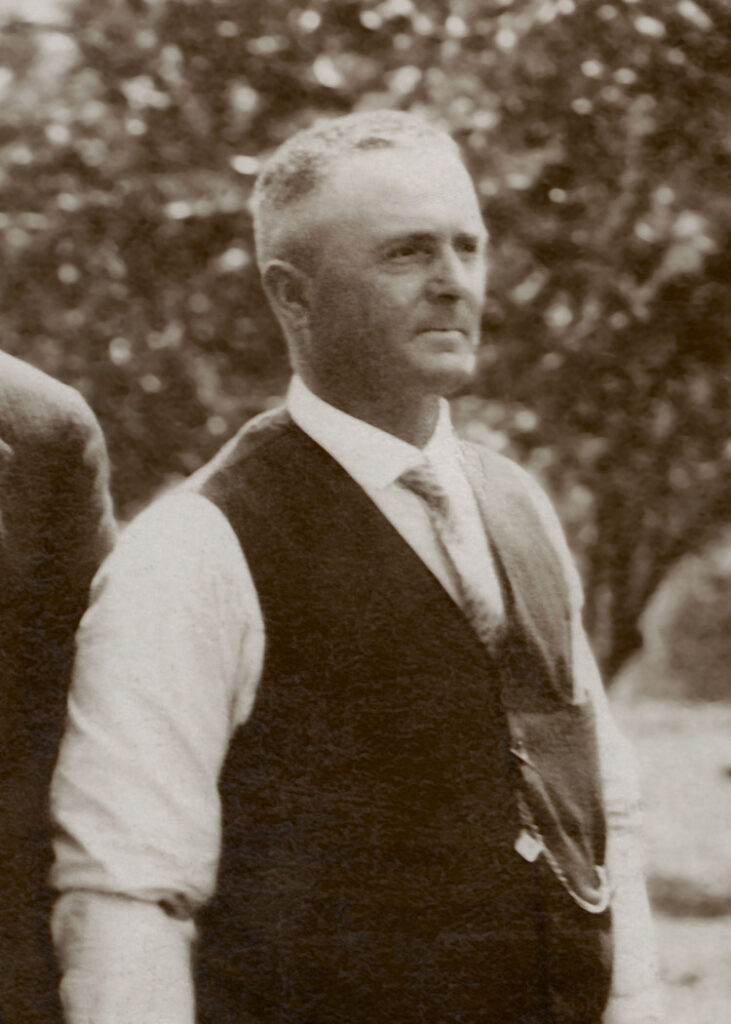
Courtesy of Jimmy Jefferson, a descendant
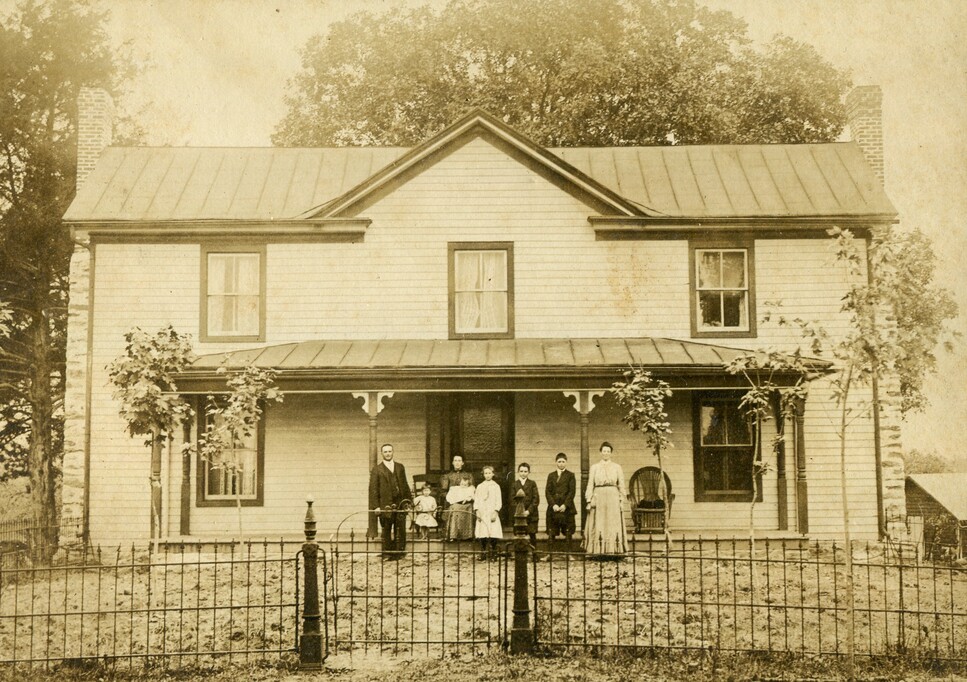
Home of J. H. Jones & family. This home still stands as of 2023.
Tarpley’s daughter Flora Jane Jones (1879-1926) married George Lee Hardy (1867-1932) from the Hardy family of Dry Fork. He and Robert E. Elliott founded The Little Mercantile Company, which was later purchased by Flora’s brother Beverly Jones. Her older brother, Sid, married George Hardy’s cousin. Flora had five children in all. Their daughter, Rebecca Hardy (1908-1992) married Charles Stanley (1904-1933) from North Carolina. Their son Charles Stanley, Jr. (1932-2023), became a prominent televangelist and served as the senior pastor of First Baptist Church in Atlanta, Georgia for nearly fifty years.
Tarpley’s son Major Jesse Jones (1881-1956) married Annie M. Richardson (1884-1963) from the Richardson family of Dry Fork. He chose to add “Jesse” to his name when he came of age. He and his wife were actually cousins through the Mitchell family. His mother and her grandmother were half-sisters with the same father. Together, they had five children. Separate from the whiskey business, Jesse decided to raise hogs and experiment in processing “whole hog sausages” to customers in the city of Danville. His efforts grew locally famous, and in 1926, the Jones Sausage brand was trademarked out of Dry Fork. About two decades later, still in the business, he began to branch out and produce hot dogs and bologna in addition to country pork sausages. The enterprise expanded into North Carolina and advertised across various newspapers, radio stations, and in television commercials. After Jesse’s death in 1956, his sons continued the business under a new name, “Jesse Jones” brand hot dogs, which are still widely available today.
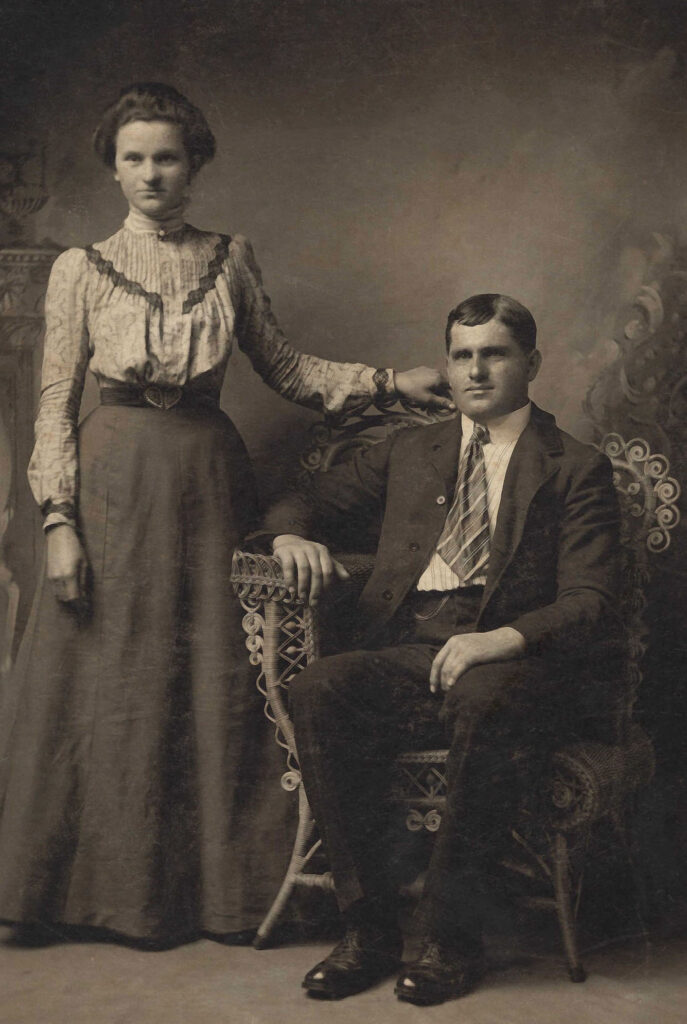
Photo courtesy of Jimmy Jefferson
Tarpley’s son Edward “Mr. Ed” Jones (1883-1965) married Lucy W. Burnett (1884-1959). Together they had ten children, but two of them did not live to adulthood. Ed, like his brother Sid, also had a license to distill whiskey between 1903 and 1904 with J. Hutch Pigg. In 1908 operations moved to an old saw mill building, likely on property acquired from the Pigg family. Around 1916, as the U.S. made movements toward Prohibition, Mr. Ed’s business changed to milling at his new enterprise, “The Dry Fork Milling Company.” A segment in the Chatham Star-Tribune newspaper from 1964, entitled “Meet Your Neighbor…” writer David Thornton interviewed Mr. Ed about his life and the mill. He told the interviewer, “We started out with four men and have had as many as 29 hired in the past.” It operated very successfully and allowed Mr. Ed to become one of the first men in the community to own an automobile–a Buick. His mill operated for over twenty years before a fire burned the business to the ground in 1938, but luckily the spread was controlled before consuming the grain warehouse. A newer brick building was completed eight months later. The mill comprised of three stories, a basement, and an attic space. It operated successfully for two more decades until another fire consumed the mill in 1958. Downcast but not defeated, Mr. Ed continued his operations at the age of seventy-five in another building on the property. The following year, his wife Lucy passed away after 56 years of marriage, and Mr. Ed continued to operate the mill. Eventually his grandson, Ed Williams became manager of the mill. Mr. Ed lived the remainder of his years in his beloved community of Dry Fork before he passed away at the age of 82.
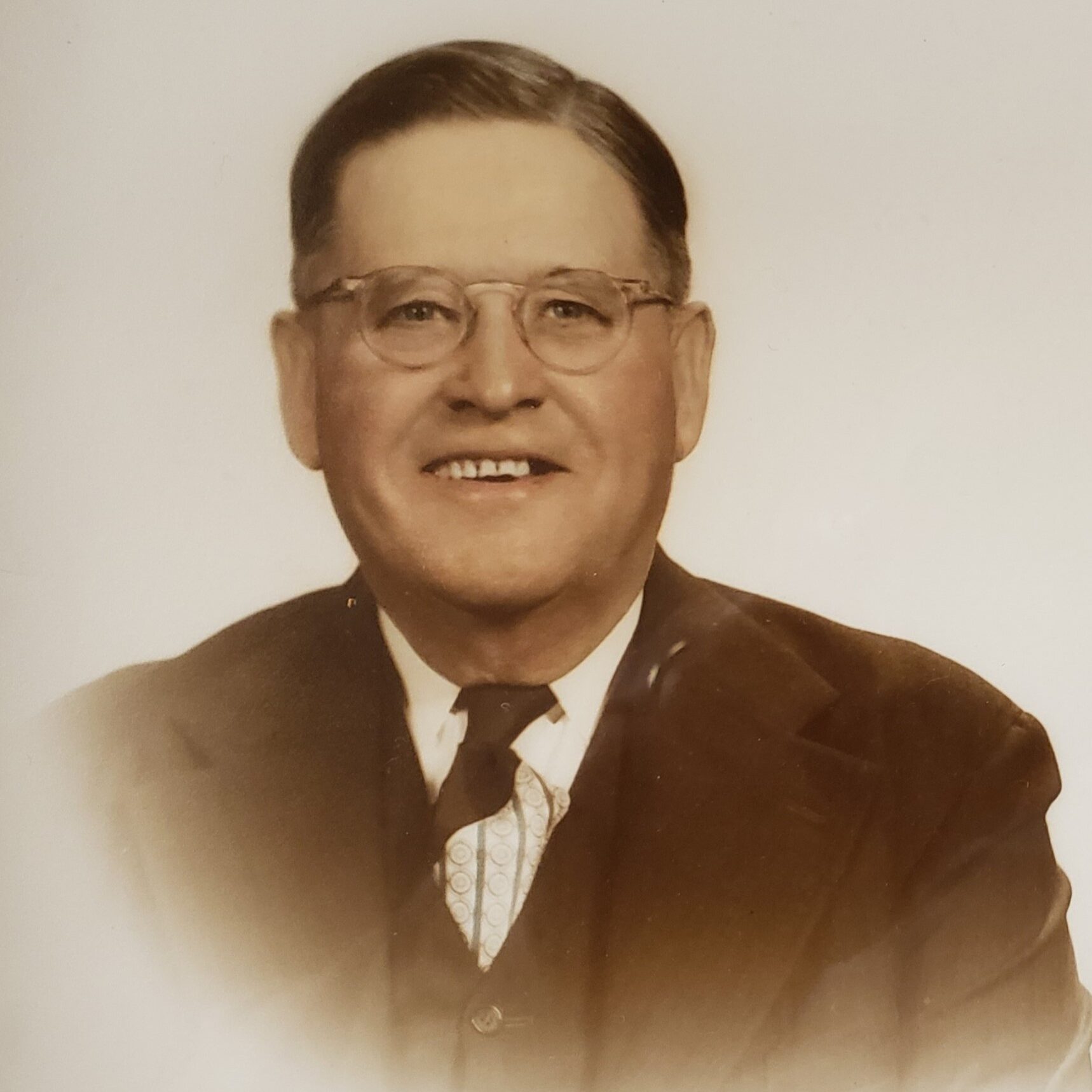
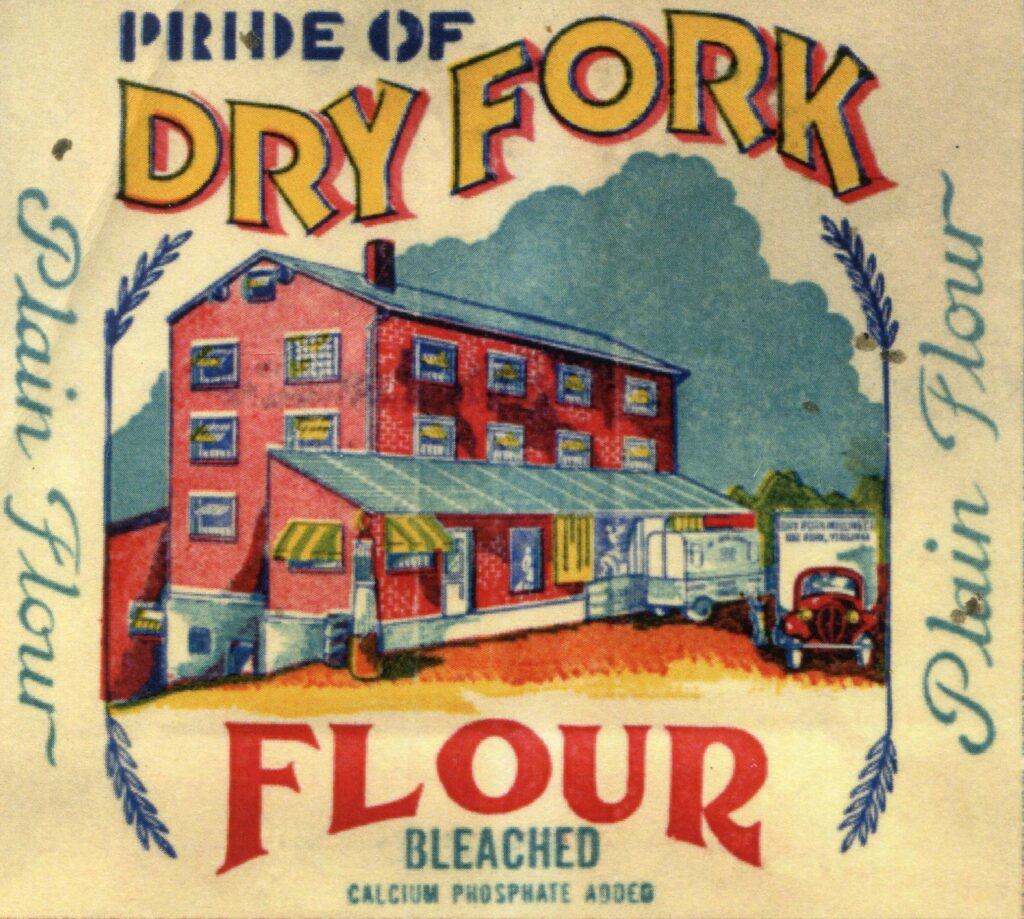
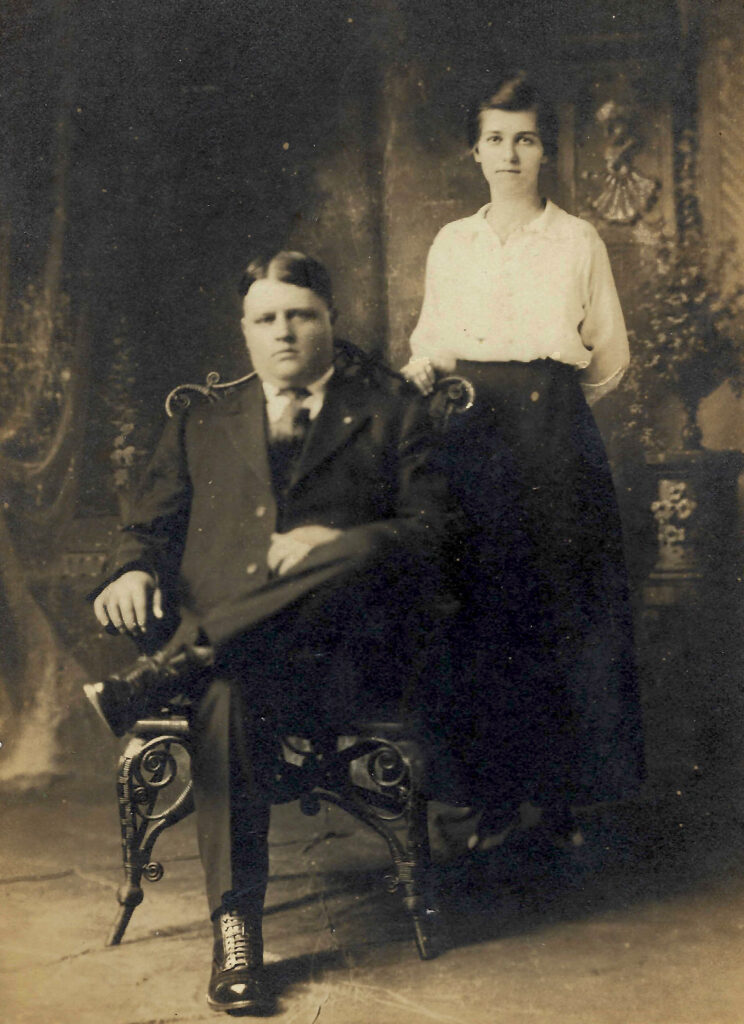
Photo courtesy of Jimmy Jefferson
Tarpley’s son Beverly White Jones (1885-1944) married Annie Sue Mahan (1898-1981). They were actually double cousins once removed. Her grandmother was his paternal aunt, Celestia Jones; and her grandfather was his maternal uncle, Henry C. Mitchell, Jr. In addition, they were also second cousins through the Giles family. Together, Beverly and Annie had six children, four of which lived to adulthood. In 1909, he obtained a license to operate the old Pigg’s Distillery where his brother Jim was operating the year prior. After 1914, Beverly switched to the dairy business raising cattle. For over thirty years, Beverly employed local men as hands on the dairy farm. The 1940 census lists neighbors Jesse Powell, Walter Mills, his son Duvall, Robert Love, J. B. Butler, and Roy Waller as laborers on the dairy farm. Beverly’s efforts were halted by poor heart health, as well as troubles with diabetes and eventually anemia. He passed away at the age of 58. After his death, his sons Hugh Tapp and Raymond G. Jones took over the responsibilities of the dairy farm with hired local labor.
Tarpley’s son Hugh Tarpley Jones (1887-1911) married Betty Lou Wright (1891-1972). The 1910 census shows them married and living together along Franklin Turnpike. In their household were three boarding men of a similar age, two of which worked as clerks in local general stores. Their names were William Crane, Henry Mills, and his brother Walter Mills. The following January of 1911, Hugh welcomed a son, Dennis Fleet Jones. However, his role as a father was cut short, as he passed away the same year at the age of 24.
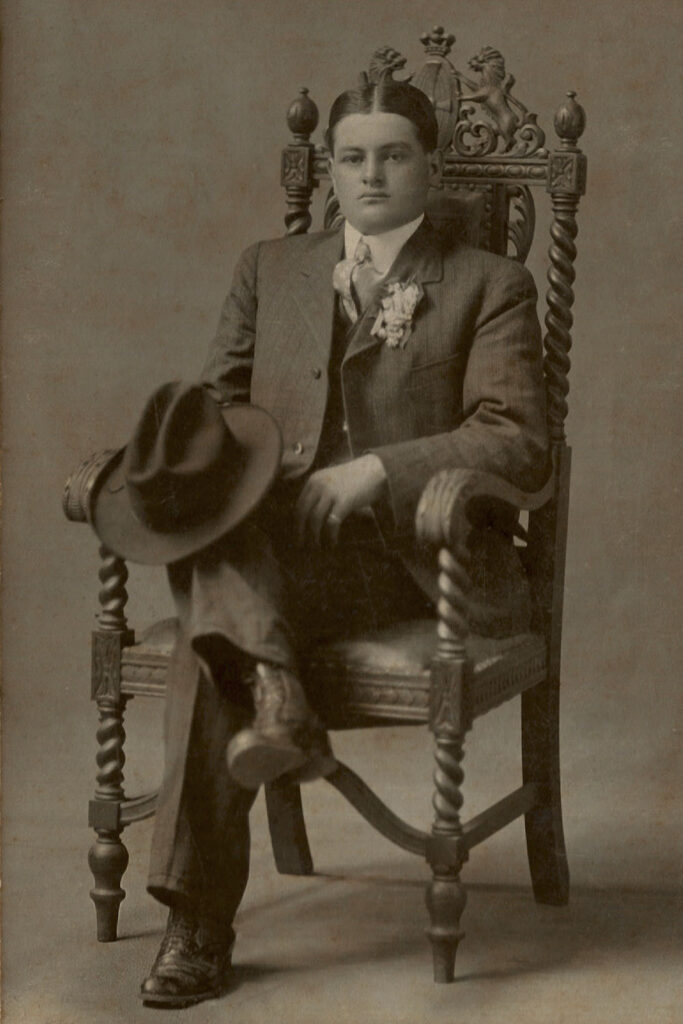
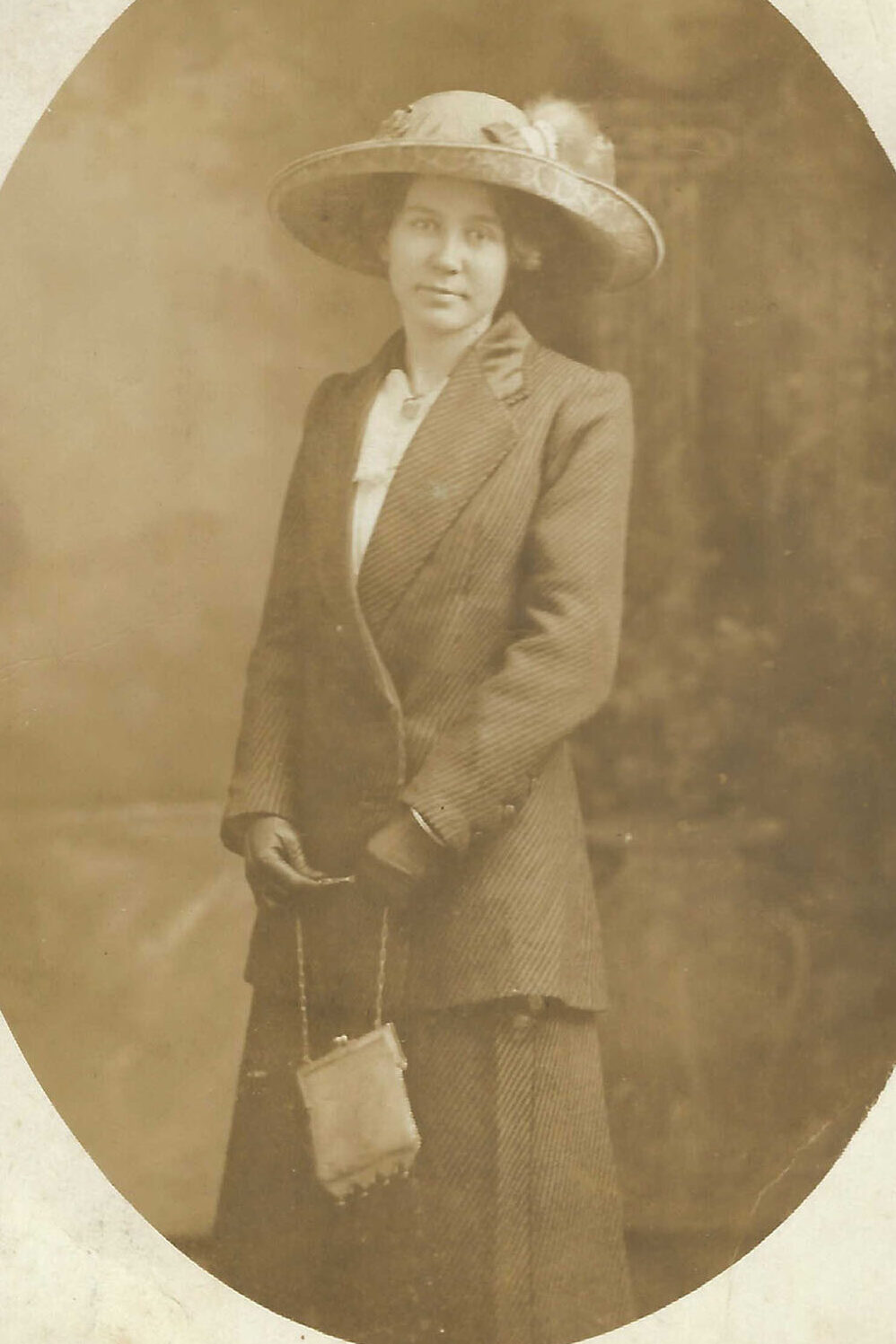
Tarpley’s daughter Madie Sue Jones (1890-1942) married David Crockett “Dave” Cassada (1886-1934). Together they had thirteen children, many of which lived long lives. Dave made a business of building houses and selling real estate. Unfortunately, he lost his life at age 48 after he received fatal internal injuries upon being pinned against a wagon while working with his mule. After becoming widowed, Madie lived with her son Hugh Cassada. Madie suffered from thrombosis of the leg, as well as heart trouble, which led to her early death at the age of 53.
Tarpley’s daughter Augusta “Gustie” Jones (1892-1934) married Eggleston Carlyle Elliott Sr. (1898-1952) from the Elliott family of Dry Fork. Together they had seven children. In the 1920 census, Gustie and her husband were living with her sister Madie J. Cassada’s family. Her husband worked for the Clutter Furniture Company in Danville as a salesman. In 1930 they lived next to Eggleston’s brother Rev. Thomas P. Elliott (1901-1939) and his wife Flossie Stowe Elliott (1907-2003). Her husband worked for the Clutter Furniture Company in Danville as a salesman. Gustie, at the age of 41, suffered a stroke which paralyzed her left side. This rupture caused her unfortunate death several days afterward.
Tarpley’s daughter Eva Jones (1894-1988) married Martin Forney Crane (1884-1976). Together they had eleven children. Martin worked in Dan River Cotton Mills for over twenty years. When their children got old enough, they worked in the mill, too. The 1940 census shows Martin in the shipping room of the mill, son Beverly was a weaver, and son Homer was a spinner. By 1950, Eva and her husband were living with their son Bobby in Norfolk, who worked at a Naval Air Station as an airplane mechanic. They lived the remainder of their lives at the coast near Virginia Beach. Eva outlived all twelve of her siblings to an impressive age of 93.
Tarpley’s son Tarpley White “Tapp” Jones, Jr. (1897-1947) married Clara Virginia Mahan (1900-1979) in 1917. A year prior, his brother Beverly had married Clara’s sister, Anna Mahan. Tarpley was employed by his brother Beverly at the dairy farm. For a little while, Tapp moved to West Thomas Street in Danville. Clara’s younger sister, Hazel, was also living with them during the time of the 1920 census. The marriage ended up not working out, and after four years they were divorced. At this point, Tapp moved back and worked on the dairy farm with his brother during the 1920’s and early 30’s. He eventually moved up to Dumbarton, Virginia, working at a store, and met a woman from New York named Bertrice Patraw (1894-1987). They wed in 1939 and lived together in Richmond on Lincoln Ave. There, Tapp took a job as a foreman at the Virginia State Penitentiary. He was working there at the time of the notable trial and execution of Odell Waller from Gretna, Virginia in 1942. Several years later, Tapp became a mechanic instead. His health took a turn for the worse when he was struck with sudden heart failure at the age of 51.
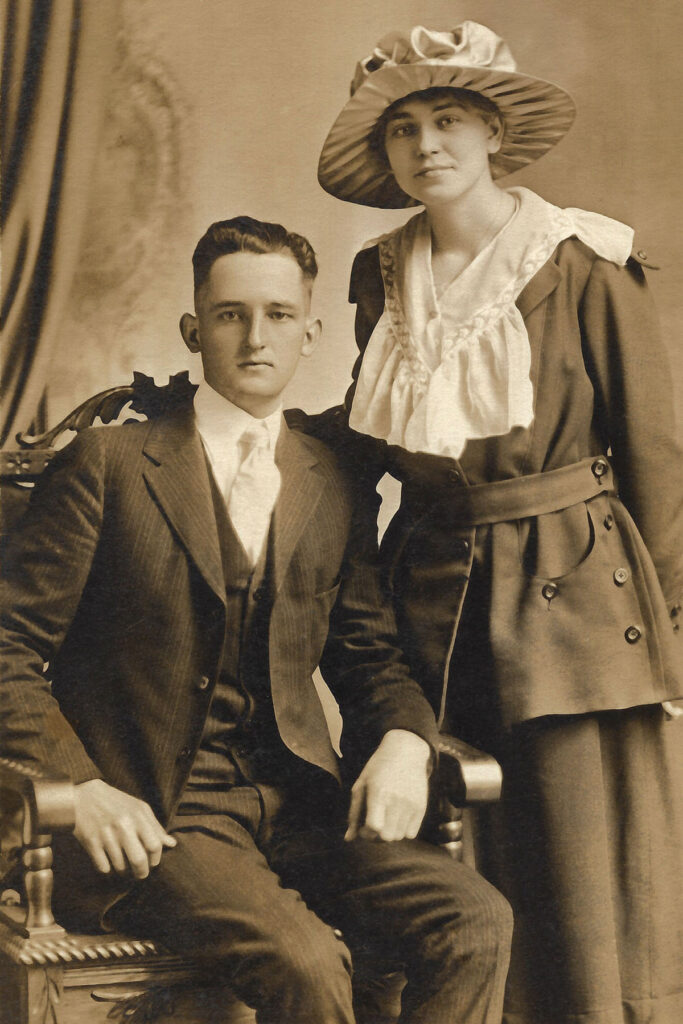
The stories of the Tarpley W. Jones, Sr. family of Dry Fork are more than just a family history; they’re like a treasure trove of memories for the whole community. The tales of whiskey distilleries, milling enterprises, and agricultural pursuits resonate as echoes of an older age. Preserving these narratives is not merely an exercise in recalling names and dates; it is a collective effort to understand the community’s roots, draw lessons from its history, and ensure these stories endure for generations to come.
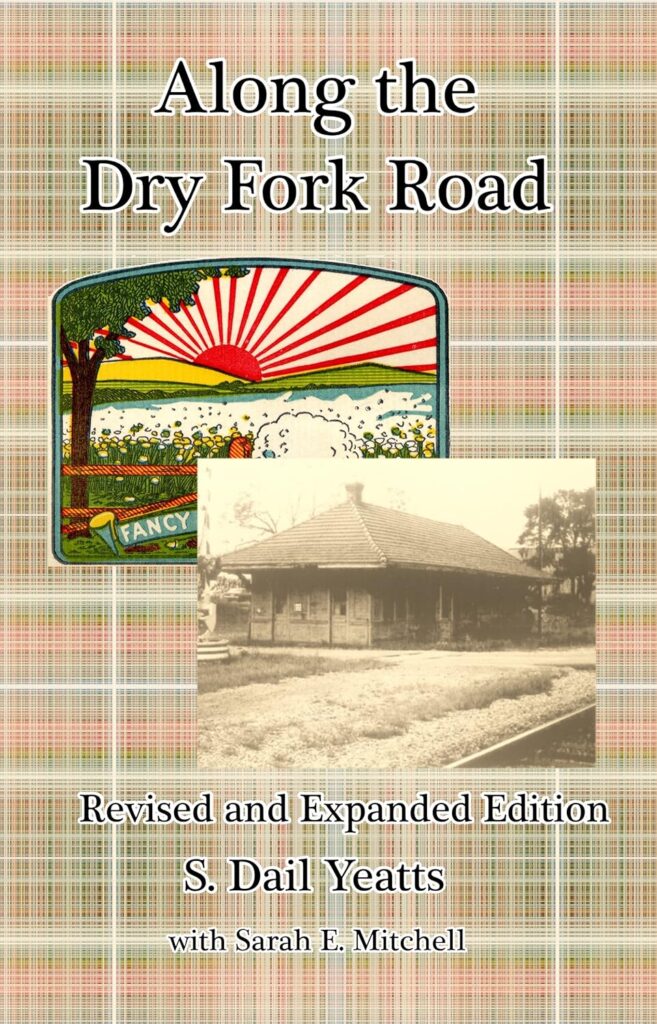
Recommended
Along the Dry Fork Road
To research more into the particular businesses and families of Dry Fork throughout the 20th century, read this book. The late S. Dail Yeatts wrote this goldmine of information and published a Revised and Expanded Edition with Sarah Mitchell in 2016. Much of what I could not research myself was sourced from this book.
This page was last updated 15 November 2023.

Pingback: Legacy of Grant’s Store – Griffith Preservation
Annette Parrish
Pingback: Cabinet Cards – Griffith Preservation